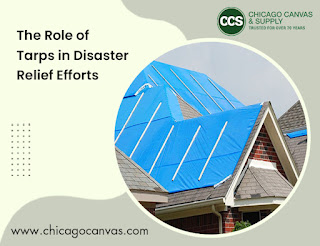The Role of Tarps in Disaster Relief Efforts
Tarps have become an essential part of disaster relief efforts worldwide. From earthquakes to hurricanes, tarps have played a crucial role in providing shelter and protection to the affected people. Tarps have been used in many ways, from creating temporary shelters to covering damaged roofs. Today, we will discuss the different types of tarps used in disaster relief efforts and how they play a vital role in providing relief to those affected by natural disasters.
Types of Tarps Used in Disaster Relief Efforts
Tarps come in many shapes and sizes, and each type is designed to serve a specific purpose. Some of the most commonly used tarps in disaster relief efforts are muslin tarps, canvas tarps, stage curtains, and poly tarps. Let's take a closer look at each of these types of tarps and how they are used in disaster relief efforts.
Muslin Tarps
Muslin tarps are made of 100% cotton and are known for their durability and strength. They are often used in disaster relief efforts because they can withstand harsh weather conditions and provide excellent protection from the elements. Muslin tarps are also commonly used as floor coverings and as a lining for temporary shelters.
Canvas Tarps
Canvas tarps are made of heavy-duty cotton and are often used in disaster relief efforts because of their strength and durability. They are resistant to water and can provide excellent protection against the rain. Canvas tarps are often used to cover damaged roofs, create temporary shelters, and provide shade.
Stage Curtains
Stage curtains are typically made of heavy-duty polyester or cotton and are often used in disaster relief efforts as a barrier against the wind and rain. They are commonly used as temporary walls for shelters, to create privacy, and to protect against harsh weather conditions.
Poly Tarps
Poly tarps are made of polyethylene and are often used in disaster relief efforts because of their lightweight and easy-to-carry design. They are commonly used as a temporary shelter, to cover damaged roofs, and to create privacy walls.
The Role of Tarps in Disaster Relief Efforts
Tarps play a vital role in disaster relief efforts. They are used to provide shelter, cover damaged roofs, and protect against harsh weather conditions. Here are some of the ways tarps are used in disaster relief efforts:
Shelters
Tarps are often used to create temporary shelters for those affected by natural disasters. These shelters can provide a safe place for people to sleep and protect them from the elements.
Covering Damaged Roofs
After a natural disaster, many people are left with damaged roofs. Tarps are often used to cover these damaged roofs and protect the interior of the building from further damage.
Protection Against Harsh Weather Conditions
Tarps can provide protection against harsh weather conditions such as rain, wind, and snow. They can be used to create a barrier against the wind and rain and provide shelter for those affected by the disaster.
Creating Privacy
Tarps can be used to create privacy walls for those living in temporary shelters. This can help people feel more secure and protect them from prying eyes.
The Bottom Line
Tarps play a crucial role in disaster relief efforts. They provide shelter, cover damaged roofs, and protect against harsh weather conditions. Muslin tarps, canvas tarps, stage curtains, and poly tarps are all commonly used in disaster relief efforts and each serves a specific purpose. As we continue to face natural disasters worldwide, it's essential to recognize the critical role that tarps play in providing relief to those affected by these disasters.

.png)
